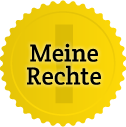In 2015 public expenditure on education in Austria was 18.84 billion euros, with the lion’s share of 5.50 billion (29.2%) going to compulsory schooling (primary, general secondary, special needs and pre-vocational schools and the new secondary schools), followed by expenditure on the universities totalling 4.10 billion euros (21.8%).
2.32 billion euros (12.3%) was spent on all types of childcare centres (including nurseries, mixed-age facilities, crèches and day care centres).
The two next largest budget items were the schools for intermediate vocational education (BMS) and colleges for higher vocational education (BHS) accounting for approx. 2.26 billion euros (12.0%), and the academic secondary schools (AHS) at 1.82 billion euros (9.7%).
Expenditure attributable to educational costs for the ministry and management came to 1.71 billion euros (9.1%).
The three lowest expenditure groups were the part-time vocational schools at 565 million euros (3.0%), the universities of applied sciences at 361 million euros (1.9%) and the university colleges of teacher education at 210 million euros (1.1%).
Expenditure on education by educational institution
in million euros
Childcare centres: nurseries, mixed-age facilities, crèches and day care centres
Higher education institutions: universities, universities of applied sciences and academies/university colleges of teacher education
AHS, BMS, BHS: academic secondary schools, schools for intermediate vocational education and colleges for higher vocational education
Compulsory schools: primary schools, new secondary schools, general secondary schools, pre-vocational schools and part-time vocational schools
Source: Statistics Austria, Statistics for expenditure on education – next update: March 2018
Expenditure on education by educational institution (more precise breakdown for 2015)
in million euros
Childcare centres: nurseries, mixed-age facilities, crèches and day care centres
Compulsory schools: primary schools, new secondary schools, general secondary schools and pre-vocational schools
Source: Statistics Austria, Statistics for expenditure on education – next update: March 2018
Expenditure on education by educational institution - indexed
The greatest increase in expenditure is for child day care facilities and the universities.
Index: year 2000 = 100.00
Childcare centres: nurseries, mixed-age facilities, crèches and day care centres
Higher education: universities, universities of applied sciences and academies/university colleges of teacher education
AHS, BMS, BHS: academic secondary schools, schools for intermediate and colleges for higher vocational education
Compulsory schools: primary schools, new secondary schools, general secondary schools, pre-vocational schools and part-time vocational schools
Sources: Statistics Austria, Statistics for expenditure on education – next update: March 2018; Statistics Austria, Consumer price index 2000
Share of expenditure for educational institutions in % of total expenditure on education
in %
Childcare centres: nurseries, mixed-age facilities, crèches and day care centres
Higher education: universities, universities of applied sciences and academies/university colleges of teacher education
AHS, BMS, BHS: academic secondary schools, schools for intermediate and colleges for higher vocational education
Compulsory schools: primary schools, new secondary schools, general secondary schools, pre-vocational schools and part-time vocational schools
Source: Statistics Austria, Statistics for expenditure on education – next update: March 2018
Expenditure on education by educational institution in % of economic output
Childcare centres: nurseries, mixed-age facilities, crèches and day care centres
Higher education: universities, universities of applied sciences and academies/university colleges of teacher education
AHS, BMS, BHS: academic secondary schools, schools for intermediate and colleges for higher vocational education
Compulsory schools: primary schools, new secondary schools, general secondary schools, pre-vocational schools and part-time vocational schools
Sources: Statistics Austria, Statistics for expenditure on education – next update: March 2018; Statistics Austria, National accounts – annual data
Development
Since 2000 public expenditure on education has grown by 70.3%, exceeding economic output (+61.3%). Growth well above the inflation rate brought about a real increase in expenditure of 27.1% (see: Overview of expenditure on education).
Since 2000 budgets for childcare centres (nurseries, mixed-age facilities, crèches and day care centres: +141.8%) and for higher education institutions (universities, universities of applied sciences, academies/university colleges of teacher education: +115.2%) have more than doubled. As for overall expenditure on education, these costs grew much faster than economic output. There was a significant increase in expenditure even where adjusted for inflation: a rise in real terms of 80.5% for child day care and 60.6% for higher education.
The trend for the gross domestic product was reflected by the growth in common budgets for the academic secondary schools and the schools for intermediate vocational education and the colleges for higher vocational education (+61.2%; nominal GDP: +61.3%). In real terms there was a significant increase of 20.3%. The smallest rise was in spending on compulsory schooling (primary schools, new secondary schools, general secondary schools, pre-vocational schools, part-time vocational schools: +44.5%), falling well short of economic output. This expenditure still increased by 7.8% in real terms.
Since 2000 the management budget has been reduced pro rata by around a sixth, falling from 10.9% to 9.1% of the total spend on education. At 41.4%, growth up to 2015 was the flattest in all of the sectors listed here (+5.5% in real terms).




